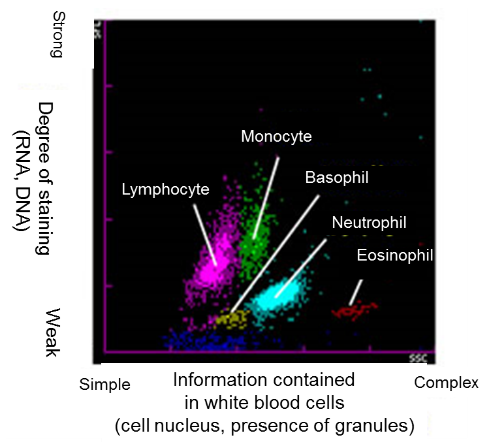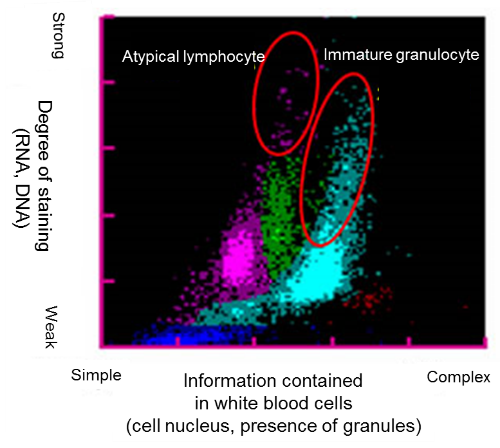Sysmex Receives the Fiscal 2017 Commendation for Science and Technology by the Minister of Education, Culture, Sports, Science and Technology (Prize for Science and Technology)
Sysmex Corporation (HQ: Kobe, Japan; Chairman and CEO: Hisashi Ietsugu) has received the Fiscal 2017 Commendation for Science and Technology by the Minister of Education, Culture, Sports, Science and Technology, Prize for Science and Technology (Development Category), sponsored by the Ministry of Education, Culture, Sports, Science and Technology, for its Development of White Blood Cell Five-Part Differentiation and an Atypical White Blood Cell Differentiation Method. This is the fourth time Sysmex has received this award. The award ceremony is scheduled to be held on Wednesday, April 19, at the Ministry of Education, Culture, Sports, Science and Technology lecture hall.
The Commendation for Science and Technology by the Minister of Education, Culture, Sports, Science and Technology, Prize for Science and Technology is presented to individuals and organizations that have been particularly successful in conducting research and development into, and promoting an understanding of, science and technology. By celebrating successes like these, the award is intended to increase motivation among people involved in science and technology and contribute to improvements in the level of science and technology in Japan.
Clinical testing involves classifying and counting normal white blood cells and atypical white blood cells such as immature granulocytes and atypical lymphocytes to obtain information that is important in disease diagnosis. However, with conventional automated hematology analyzers, differentiating between normal white blood cells and atypical white blood cells is difficult, and when atypical white blood cells are detected, obtaining accurate differentiation and counts is problematic. As a result, tests suspected of containing abnormal specimens have to be viewed manually under a microscope.
The technology for which Sysmex was awarded this year’s commendation focuses on the fact that atypical white blood cells contain more RNA than normal white blood cells. By using a dye compound that substantially enhances fluorescent intensity when combined with RNA, normal white blood cells and atypical white blood cells can be simultaneously and rapidly measured to a high degree of precision. This technology can be used in diagnosing and selecting methods of treatment for serious infection, transplants of cancerous bone marrow, and myelogenous leukemia, and contributes to the efficiency of clinical testing.
This technology is integrated into the XS-Series, XT-Series, XE-Series and XN-Series of multiparameter automated hematology analyzers, which Sysmex provides in countries around the world, including the United States, Europe, China and Southeast Asia.
Going forward, Sysmex will continue promoting technological development with the aim of increasing the quality and efficiency of testing. At the same time, we will pursue research and development aimed at realizing the high-quality testing needed to provide healthcare that is optimized for individual patients.
Award Details
Name: Fiscal 2017 Commendation for Science and Technology by the Minister of Education, Culture, Sports, Science and Technology, Prize for Science and Technology (Development Category)
Recipients:
Toshihiro Mizukami (Sysmex Corporation)
Munetaka Ishiyama (Dojindo Laboratories)
Takashi Sakata (Sysmex Engineering Co., Ltd.)
Topic: Development of White Blood Cell Five-Part Differentiation and an Atypical White Blood Cell Differentiation Method
Differentiation of Normal and Atypical White Blood Cells


Information contained in the press release is current as of the date of the announcement, but may be subject to change without prior notice.
